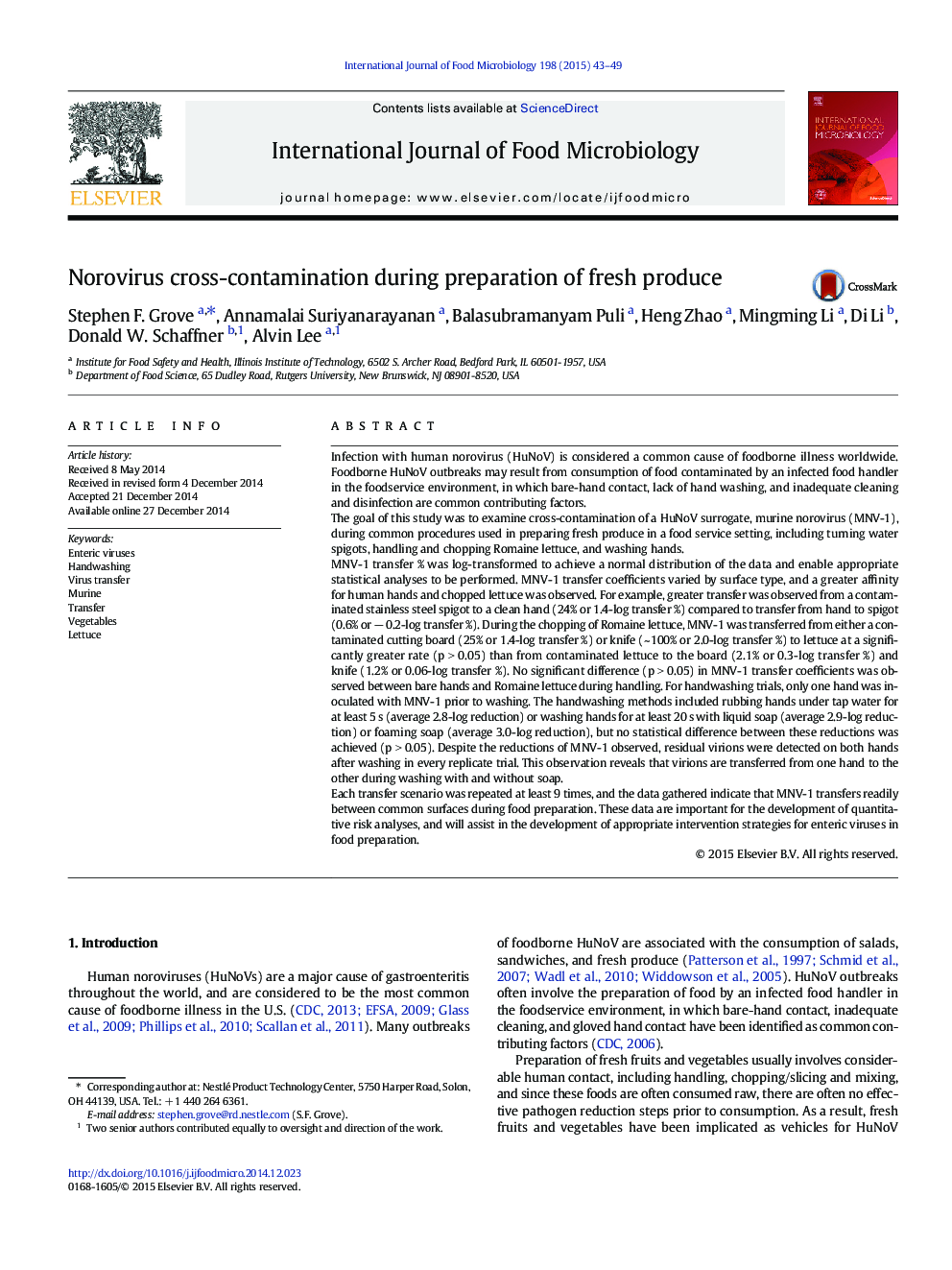| کد مقاله | کد نشریه | سال انتشار | مقاله انگلیسی | نسخه تمام متن |
|---|---|---|---|---|
| 4366707 | 1616585 | 2015 | 7 صفحه PDF | دانلود رایگان |
• Murine norovirus transfers readily between surfaces during salad preparation.
• Virus transfers readily to lettuce from contaminated knife blade during chopping.
• Murine norovirus can be transferred from one hand to the other during handwashing.
• Hands may become highly contaminated upon handling a virus-contaminated surface.
Infection with human norovirus (HuNoV) is considered a common cause of foodborne illness worldwide. Foodborne HuNoV outbreaks may result from consumption of food contaminated by an infected food handler in the foodservice environment, in which bare-hand contact, lack of hand washing, and inadequate cleaning and disinfection are common contributing factors.The goal of this study was to examine cross-contamination of a HuNoV surrogate, murine norovirus (MNV-1), during common procedures used in preparing fresh produce in a food service setting, including turning water spigots, handling and chopping Romaine lettuce, and washing hands.MNV-1 transfer % was log-transformed to achieve a normal distribution of the data and enable appropriate statistical analyses to be performed. MNV-1 transfer coefficients varied by surface type, and a greater affinity for human hands and chopped lettuce was observed. For example, greater transfer was observed from a contaminated stainless steel spigot to a clean hand (24% or 1.4-log transfer %) compared to transfer from hand to spigot (0.6% or − 0.2-log transfer %). During the chopping of Romaine lettuce, MNV-1 was transferred from either a contaminated cutting board (25% or 1.4-log transfer %) or knife (~ 100% or 2.0-log transfer %) to lettuce at a significantly greater rate (p > 0.05) than from contaminated lettuce to the board (2.1% or 0.3-log transfer %) and knife (1.2% or 0.06-log transfer %). No significant difference (p > 0.05) in MNV-1 transfer coefficients was observed between bare hands and Romaine lettuce during handling. For handwashing trials, only one hand was inoculated with MNV-1 prior to washing. The handwashing methods included rubbing hands under tap water for at least 5 s (average 2.8-log reduction) or washing hands for at least 20 s with liquid soap (average 2.9-log reduction) or foaming soap (average 3.0-log reduction), but no statistical difference between these reductions was achieved (p > 0.05). Despite the reductions of MNV-1 observed, residual virions were detected on both hands after washing in every replicate trial. This observation reveals that virions are transferred from one hand to the other during washing with and without soap.Each transfer scenario was repeated at least 9 times, and the data gathered indicate that MNV-1 transfers readily between common surfaces during food preparation. These data are important for the development of quantitative risk analyses, and will assist in the development of appropriate intervention strategies for enteric viruses in food preparation.
Journal: International Journal of Food Microbiology - Volume 198, 2 April 2015, Pages 43–49
